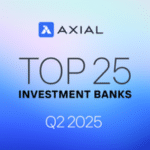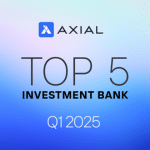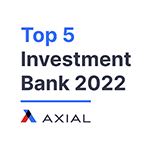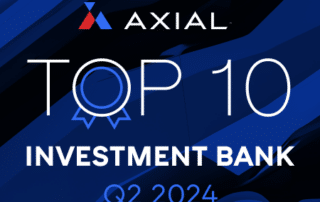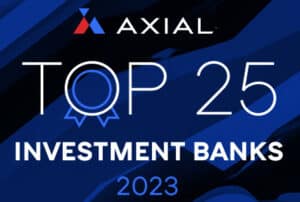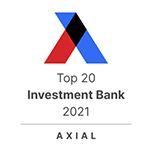
The Future of Government & Defense M&A: Key Trends and Opportunities in 2025
As national security priorities evolve and federal budgets shift, M&A continues to be a powerful growth lever for government contractors. In 2025, strategic acquisitions, divestitures, and joint ventures are shaping the next generation of mission-critical service providers.
This guide explores the market forces, financing strategies, and strategic considerations driving deal activity in the government contracting space. Understanding these trends is critical to capitalizing on new opportunities.
FOCUS Investment Banking brings decades of experience in the government and defense sector, helping business owners navigate complex transactions with confidence and clarity.
The Crucial Role of M&A Financing in Government Contracting
Market Dynamics Driving Government & Defense M&A
Surging demand for cybersecurity, IT modernization, defense logistics, and intelligence services is accelerating consolidation in the sector. Both strategic acquirers and private equity are targeting scalable contractors with strong past performance and contract vehicles.
Technological Innovation as a Catalyst
Contractors delivering AI, automation, and cyber solutions are in high demand. Buyers are actively acquiring firms with proprietary technologies, cleared personnel, and CMMC-compliant infrastructure.
Market Dynamics Driving Government & Defense M&A
Larger players are using M&A to secure long-term contracts, expand capabilities, and optimize margins through operational scale—making financing strategies a critical part of the deal equation.
Financial Implications of Industry Consolidation
Financial Implications of Industry Consolidation: Larger players are using M&A to secure long-term contracts, expand capabilities, and optimize margins through operational scale—making financing strategies a critical part of the deal equation.
Key Government & Defense Sector Trends
Interest rates continue to influence M&A
While higher rates add pressure to capital structures, well-run, cash-flow-positive contractors remain highly attractive, and creative deal financing solutions are helping buyers stay competitive.
Geopolitical Pressures
Rising international tensions in the Pacific Rim and a renewed focus on domestic defense manufacturing are boosting demand for specialized contractors in aerospace, cybersecurity, logistics, and energy.
Procurement Reform
Evolving FAR, DFARS, and SBA rules add compliance complexity in the near term, with the expectation of future shorter procurement processes and government markets opening to commercial companies and products in the long term.
Partnerships and joint ventures (JVs)
JVs remain a favored growth model for winning large-scale IDIQs and expanding into new agencies or programs without full acquisition risk.
Strategic expansion into classified work
Demand is increasing for cleared contractors with facility clearances (FCLs) and top secret personnel, especially in intelligence, defense, and space systems.
Challenges in government procurement cycles
Budget delays and procurement cycles continue to impact cash flow and deal timing, making working capital planning and buyer confidence crucial.
Labor shortages
Access to cleared and credentialed personnel is a top driver of value. Buyers are paying premiums for companies with strong recruiting pipelines and retention rates.
Growth in space and defense IT
Government-backed innovation in secure communications, data analytics, and satellite infrastructure is opening M&A opportunities across emerging technology segments.
DOGE Uncertainty/Disruption
Reductions in Force are rampant, with departures from some key government personnel slowing down procurement processes. This is accompanied by changing priorities, contract cancellations and redistribution of funding to critical priorities is reshaping government at a rapid pace.
Government & Defense M&A Outlook for 2025
Expect continued M&A momentum driven by strategic repositioning, aging ownership, and demand for new capabilities. Middle market firms offering specialized services with strong compliance and past performance are especially attractive to buyers.
Strategic Considerations for Government Contractor M&A
Portfolio reshaping
Primes and mid-tier firms are realigning portfolios—divesting non-core units while acquiring contract-rich or capability-driven firms.
Technology investments
Buyers seek niche IT, cyber, and digital modernization players that meet strict federal security and compliance requirements.
New and nontraditional players
Private equity, public tech companies, and foreign investors (CFIUS-aware) are increasingly targeting U.S. contractors for strategic expansion.
Diversification
Firms are broadening agency coverage—moving from DoD to civilian, or expanding into adjacent services like logistics, training, or engineering.
New offerings
Contractors are packaging managed services and SaaS-like delivery models to differentiate and boost margins.
Refinancing
Flexible capital solutions are helping contractors improve balance sheets, recapitalize, or fund growth through acquisitions.
Operational realignment
Buyers prioritize integration plans that align contract novation, back-office systems, and culture to ensure smooth transitions.
Practical Considerations for Small and Medium-Sized Government Contractors
Leveraging specialized financing options
SBIC-backed lenders, mezzanine financing, and seller notes provide flexibility for deals involving smaller firms with strong pipelines.
Small Business Innovation Research (SBIR) grants
SBIR/STTR programs offer early-stage capital for R&D-driven firms, making them more attractive for acquisition or scale-up investment.
SBA 7(a) loans for acquisitions
For smaller government contractors, SBA loans offer an accessible path for ownership transition or buyout scenarios.
Building Strategic Partnerships
Joint ventures and teaming agreements
Enable small businesses to compete for larger contracts and broaden their agency reach.
Mentor-Protégé programs
Encourage growth through partnerships with experienced primes, improving contract access and scalability.
Navigating Intellectual Property Challenges
IP valuation and protection
Properly valuing and protecting IP used in federal contracts is essential for accurate deal pricing and risk mitigation.
Licensing agreements as financing tools
IP licensing can provide recurring revenue streams and be leveraged to attract strategic partners or buyers.
The government contracting market in 2025 presents compelling opportunities for business owners ready to grow, exit, or restructure. From federal cyber initiatives to classified work and logistics support, demand for specialized contractors remains strong.
About FOCUS
FOCUS Investment Banking is the trusted partner for founder-led government contractors navigating the M&A process. With deep sector expertise, relationships across the buyer landscape, and a tailored approach to lower middle market businesses, we help clients maximize value and achieve their goals through strategic, well-executed transactions.


